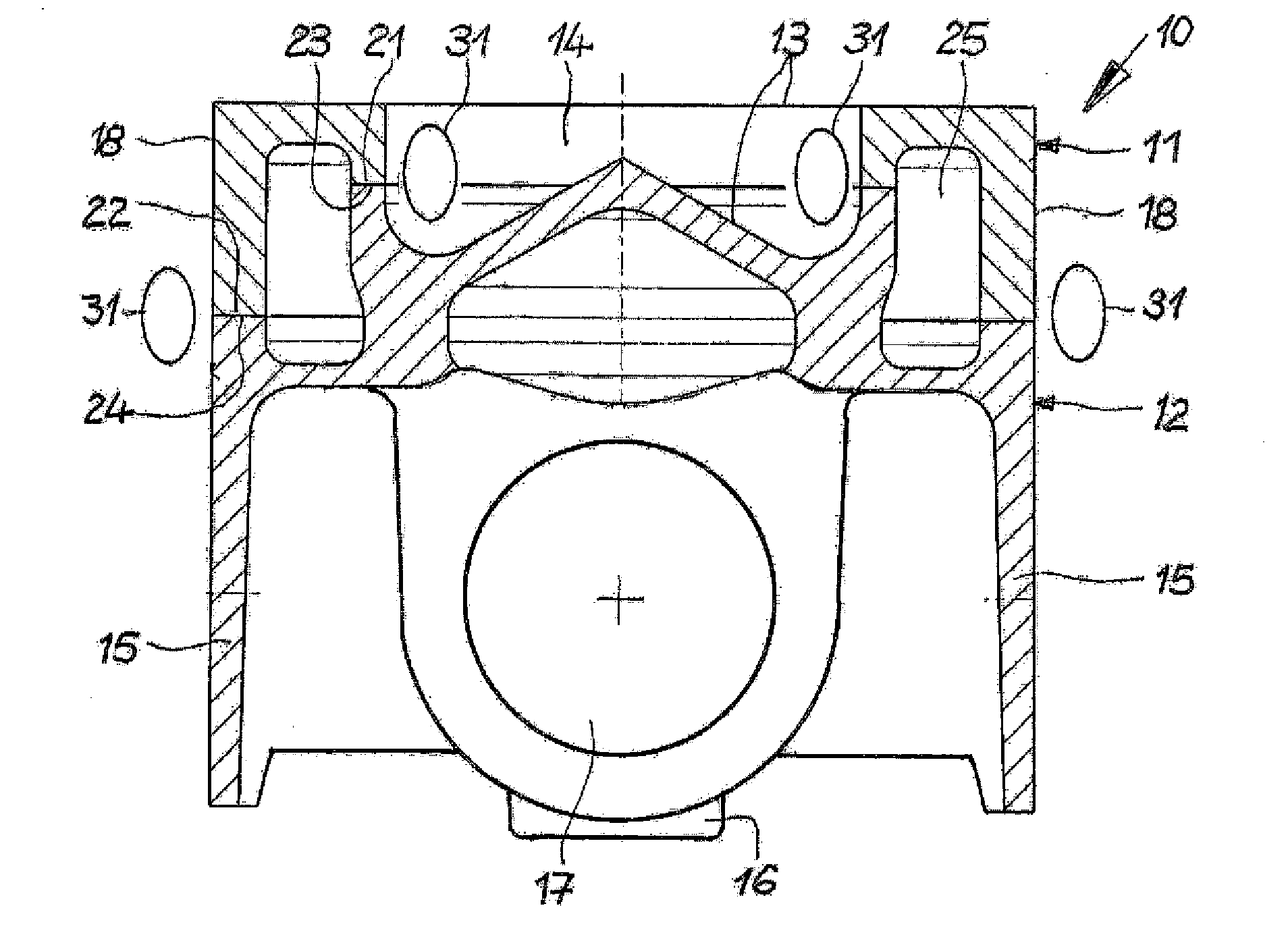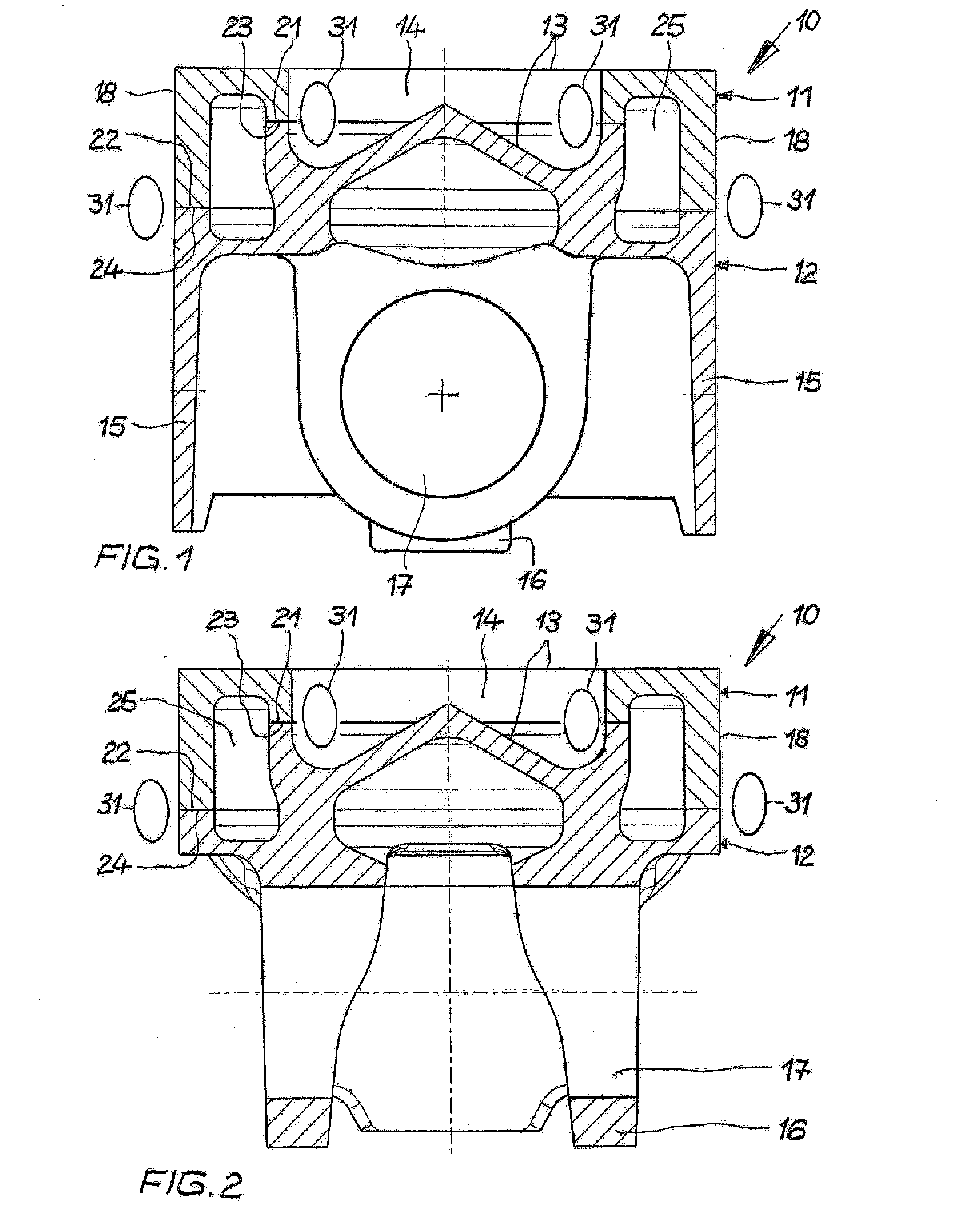Method for the production of a piston for an internal combustion engine and piston for an internal combustion engine
a technology of internal combustion engine and production method, which is applied in the direction of machines/engines, manufacturing tools, electric/magnetic/electromagnetic heating, etc., can solve the problem of not achieving optimal weld connection, and achieve the effect of optimizing the carrying away of heat and pressur
- Summary
- Abstract
- Description
- Claims
- Application Information
AI Technical Summary
Benefits of technology
Problems solved by technology
Method used
Image
Examples
Embodiment Construction
[0038]Referring now in detail to the drawings, FIGS. 1 to 4 show a first exemplary embodiment of a method according to the invention, using a piston 10. The piston 10 is a two-part box piston, having a circumferential cooling channel. However, the present invention is also suitable for other piston types, of course.
[0039]The piston 10 is composed of an upper piston part 11 and a lower piston part 12, which can be produced, for example, from a steel material or a cast iron material, for example by casting or forging. The piston 10 has a piston crown 13 having a combustion bowl 14. Piston crown 13 and combustion bowl 14 are formed partly by the upper piston part 11 and partly by the lower piston part 12. The top land and ring grooves along the outer wall region 18 are not shown, for the sake of clarity. The lower piston part 12 has a piston skirt 15 and pin bosses 16 with pin bores 17 for accommodating a piston pin (not shown).
[0040]The upper piston part 11 has an inner joining surfac...
PUM
 Login to View More
Login to View More Abstract
Description
Claims
Application Information
 Login to View More
Login to View More - R&D
- Intellectual Property
- Life Sciences
- Materials
- Tech Scout
- Unparalleled Data Quality
- Higher Quality Content
- 60% Fewer Hallucinations
Browse by: Latest US Patents, China's latest patents, Technical Efficacy Thesaurus, Application Domain, Technology Topic, Popular Technical Reports.
© 2025 PatSnap. All rights reserved.Legal|Privacy policy|Modern Slavery Act Transparency Statement|Sitemap|About US| Contact US: help@patsnap.com



